Yes, PVC pipes can be buried in concrete, but there are a few things to keep in mind. PVC pipes are often used for underground plumbing and sewer applications due to their durability and resistance to corrosion.
PVC pipes are a popular choice for plumbing and sewer applications due to their durability and resistance to corrosion.
However, when it comes to burying PVC pipes, several factors must be considered to ensure a long-lasting and secure installation.
Burying PVC pipes in concrete can put additional stress on the pipes and increase the likelihood of damage.
When burying PVC pipes in concrete, it’s important to ensure that the pipes are properly supported and protected from crushing. This can be achieved by using PVC pipe sleeves or installing the pipes in a bed of sand or gravel.
Additionally, the concrete must be poured carefully and compacted properly to avoid damaging the pipes. It’s also important to consider the environment in which the pipes will be buried.
For example, if the pipes are buried in soil prone to shifting or settling, it may be necessary to use additional supports to prevent damage to the pipes.
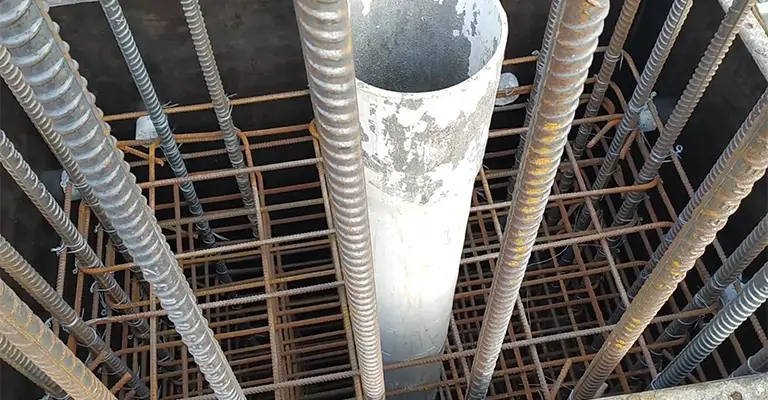
Is It Safe To Pour Concrete Over A PVC Pipe?
In some cases, yes, but you should make sure that the PVC pipe is not in direct contact with the concrete. Extreme pressure can be created on the pipe without concrete, causing it to break.
There are PVC pipes everywhere, whether they’re used to transport water or waste. The reliability of these systems makes them a common component in almost all plumbing systems.
After a few years, pipes that are routed through the ground are at risk of eroding. A variety of soil elements can affect the longevity of these pipes.
In this case, concrete is the best way to protect them. A concrete-encased sewer pipe could be much less harmful to the environment, even if it leaks a little.
How Long Does PVC Last In Concrete?
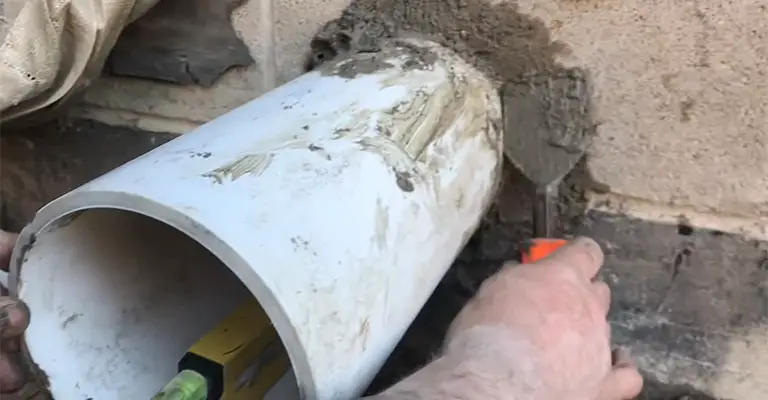
Several decades have passed since concrete has been used successfully with PVC pipe. It is expected that PVC will have a minimum service life of at least 100 years due to its corrosion resistance.
Generally, they can last between 40 and 60 years when used properly. However, drain pipes last longer when installed under concrete.
Several independent studies and the experience of many long-term PVC pipe users support this figure.
Because the pipe is not exposed to direct sunlight under concrete, it will last for about 50-100 years. Moreover, the concrete layer protects PVC pipes from harmful soil elements.
PVC pipes last longer under concrete than they do in the ground because of this. A PVC pipe’s lifespan might be reduced if it is not properly buried under concrete.
How To Bury PVC Pipe In Concrete?
It is important to ensure everything is done properly before pouring concrete around the plumbing. You can seal PVC pipes in concrete by following the steps below.
1. Dig a Trench to Lay the Pipe
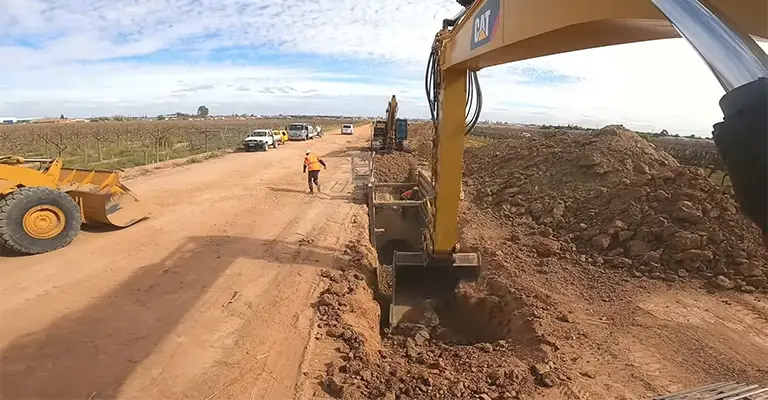
It is unsafe to lay plumbing on the ground. It is, therefore, necessary to dig a narrow and shallow trench for this purpose.
Ensure the PVC pipe doesn’t come into direct contact with the concrete. Consequently, fill the trench with sand or gravel. As well as, soaking any fluid leaking from the pipe prevents further damage.
2. Make Sure the Pipe Has No Leaks
Check the pipe visually before laying it, and make sure there are no leaks. As the pipe becomes buried in concrete, any leaks may increase.
3. Cover the Pipe with Sand or Gravel
In the same way, you sanded or graveled the bottom of the pipe; you also need to cover the top of the pipe. By doing this, extra pressure will not be created on the pipe due to the concrete.
4. Prepare the Concrete Mixture
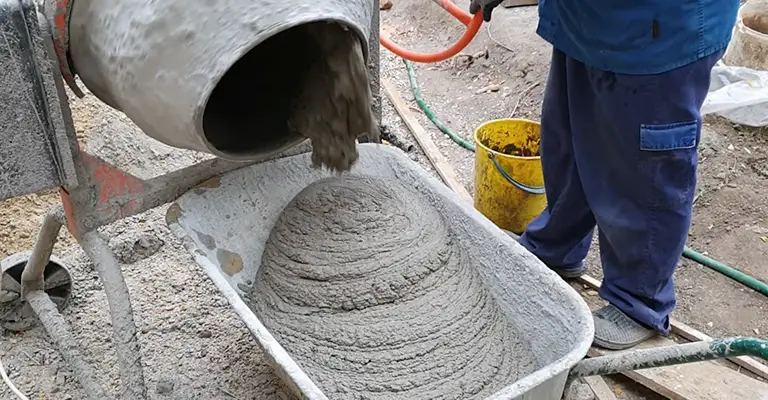
Be sure to mix all the ingredients correctly when preparing the concrete mixture. Depending on the concrete’s moisture level, it can harm the plumbing system.
5. Pour the Concrete Mixture Over the Pipe
Immediately after mixing the concrete mixture, pour it over the sand or gravel layer. Ensure that the concrete has been cured for at least 24 hours. You should limit the thickness of the concrete layer over the pipe to six inches.
Does Concrete Hurt PVC Pipe?
It is common in the building trades to use concrete and PVC pipe together. Nevertheless, many are concerned about PVC pipe damage due to concrete.
Unless the concrete cracks or shifts, PVC pipe is not generally damaged by concrete. As a result of the difference between the expansion and contraction of concrete and PVC, the PVC pipe embedded in concrete may damage itself.
The pressure generated by running hot water in cold concrete can cause the PVC pipe to distort and even fracture due to the expansion pressure.
What Material Does Concrete Not Stick To?
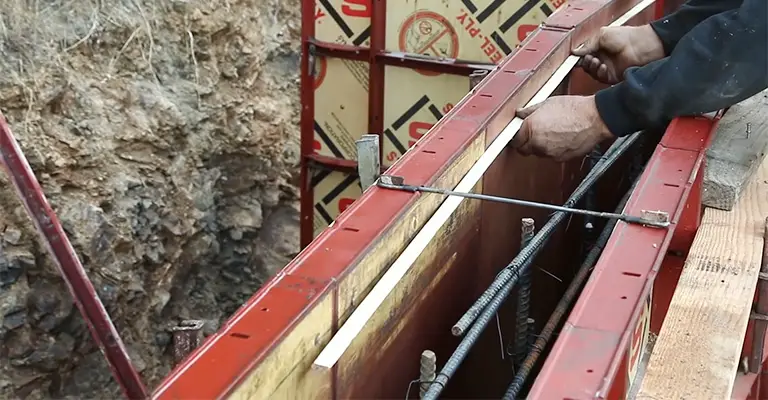
When working with concrete, it is important to use materials that will not cling to the concrete when it dries.
Although concrete is resistant to almost everything when it’s wet and dry, it can adhere to nearly anything.
There is no adhesion between concrete and hydrophobic substances. Besides being hydrophobic, cement is also water-soluble before curing, making it resistant to oils, greases, and other hydrophobic substances like wax.
Several concrete experts recommend using wax instead of grease or oil to form concrete. The voids in wooden forms are perfect for trapping wax, so wax tends to be more effective when used with wooden forms.
Wood fibers are prevented from allowing water to enter the form between them. Additionally, it acts as a buffer to prevent concrete from adhering to the wooden forms.
How Deep Should PVC Pipe Be Under Concrete?
It has already been mentioned that concrete should not exceed six inches in thickness over PVC pipe. You may encounter problems when fitting plastic water pipes into concrete if they are thicker than that.
It is possible that rigid PVC pipes would become brittle if concrete layers are thicker. Leaks would therefore develop over time as a result.
Using flexible PVC pipes under thick concrete can lead to the pipe being suppressed by the material and blocking the plumbing system.
To prevent the concrete layer from exceeding its allowed thickness, carefully pour it.
Safety Precautions When Burying PVC Pipe In Concrete
It is essential to take safety precautions when burying pipes in concrete. If the pipes move out of place, leaks and other problems can result after the concrete has dried.
Using a cement mortar and waterproofing the pipe when burying it in concrete, for example, is a safety measure. This precaution has a significant impact when trying to extend a PVC pipe’s life.
There are also ways to avoid the leakage problem, but they all involve time and money.
One solution is to pour concrete into the ground before pouring it into the foundation. Another is to use a chemical like an anti-foaming agent to keep air bubbles at bay.
Alternatively, you can pour the foundation first and then fix the piping later, so you don’t have pipes sticking out of your finished product or experiencing any problems associated with them being exposed for too long.
Consider these safety precautions when burying pipes in concrete if none of the above tips are secure for you.
- Do not bury the pipe before the concrete has been set.
- Leave at least 1/2″ of concrete cover on top of the pipe.
- Do not cut pipes and bury them under the concrete slab.
- It is recommended to use steel sleeves or another type of encasement to protect pipes from contact with rebar, insulation, and flooring when burying pipes under concrete slabs.
- Keeping soil from seeping into pipe areas and contaminating groundwater is also possible by using an isolation sealant between soil and pipe.
Final Words
In conclusion, we want to remind you how important it is to bury PVC pipe under concrete correctly. A flexible space must be left around the pipe to flex.
PVC pipes would risk breaking under concrete if they were not protected. Using a sand or gravel layer around the pipe protects it from direct hits from the concrete.
This will increase the durability of the plumbing system rather than simply stacking PVC pipes on top of concrete.
Our goal is to show you how to save your plumbing system from damage by doing things the way we showed you.






